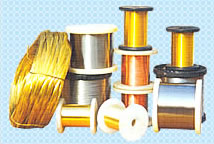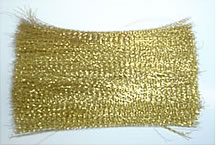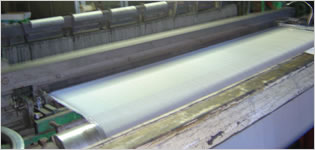Standard Brass Wire: Composition of 67% Copper and 33% Zinc
Brass wire is a versatile and durable metal product that is made from a combination of copper and zinc. It is known for its excellent conductivity, corrosion resistance, and malleability, making it an ideal material for a wide range of applications. Brass wire is commonly used in the manufacturing of electrical components, such as connectors and terminals, as well as in the production of jewelry, musical instruments, and decorative items. Its unique combination of strength, flexibility, and resistance to wear and tear make it a popular choice for use in a variety of industries. Additionally, brass wire is relatively easy to work with and can be easily shaped, cut, and soldered, making it a convenient and versatile material for use in a wide range of applications.
Classification of Brass Wire by Material
Brass wire can be classified based on its material composition, primarily consisting of copper and zinc with varying proportions and additional alloying elements.
- Standard Brass Wire:
This category includes brass wires made from the standard copper-zinc alloy, typically containing around 67% copper and 33% zinc. It offers good corrosion resistance, machinability, and electrical conductivity. - High-Zinc Brass Wire:
High-zinc brass wires contain a higher percentage of zinc, often exceeding 33%. These alloys offer improved machinability and corrosion resistance, making them suitable for applications requiring these specific properties. - Alpha Brass Wire:
Alpha brass is a specific type of brass alloy that contains a higher copper content, typically around 90% copper and 10% zinc. It exhibits excellent cold working properties and is commonly used in applications where high strength and corrosion resistance are required. - Special Brass Wire:
Special brass wires are alloys that include additional elements beyond copper and zinc, such as aluminum, nickel, manganese, silicon, lead, or tin. These alloying elements are added to enhance specific properties like strength, corrosion resistance, or machinability, depending on the application. - Red Brass Wire:
Red brass wire is an alloy with a higher copper content, typically around 85% copper and 15% zinc, along with small amounts of other elements like lead, tin, or nickel. It offers excellent corrosion resistance and is often used in plumbing and marine applications. - Free-Cutting Brass Wire:
Free-cutting brass wires are alloys designed for ease of machining and cutting. They contain additional elements like lead, which acts as a lubricant during machining, reducing tool wear and improving surface finish.
Applications of Brass Wire
Brass wire, along with copper wire and phosphor bronze wire, is commonly used in wire mesh weaving, the manufacturing of cables, and the production of brass brushes and strainers.
Wire Diameter
The diameter of brass wire is a critical specification that determines its suitability for different applications. Commonly used diameters of brass wire range from 0.08mm to 0.7mm, with some manufacturers offering diameters up to 2.0mm or even larger. The diameter of the wire is typically measured in millimeters (mm), but it can also be expressed in inches, with 1 inch equal to 25.4mm.
Standard Shapes
Brass wire is available in a range of standard shapes, including round, square, and rectangular. Round wire is the most common shape and is used in a wide range of applications, from electrical components to decorative items. Square and rectangular wires are less common but are used in specific applications where a non-round shape is required.
Sizes
In addition to wire diameter, the length of the wire is also an important specification. Brass wire is typically available in standard lengths, such as 100 meters or 500 meters, but it can also be cut to custom lengths as required. The length of the wire can impact its usability and cost, so it is important to choose the right length for the specific application.
Typical Standards
Brass wire is produced according to various international standards, such as ASTM, DIN, and JIS. These standards specify the chemical composition, mechanical properties, and other characteristics of the wire, ensuring that it meets the required quality and performance standards for different applications.
Packaging
Brass wire is typically packaged in coils or spools, with the packaging size varying depending on the wire diameter and length. Coils are commonly used for smaller diameters and shorter lengths, while spools are used for larger diameters and longer lengths. The packaging is designed to protect the wire during transport and storage, while also allowing for easy handling and dispensing.

 |
 |
| Spool type | Diameters | |||
| 0.15 | 0.20 | 0.25 | 0.30 | |
| K 125 | * | * | * | * |
| K 160 | * | * | * | * |
| K 200 | - | * |
* | * |
| K 355 | - |
- | * | * |
| P 5 | * | * | * | * |
| P 10 | - | * | * | * |
| P 15 | - | * | * | * |





